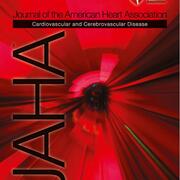Abstract
Heart failure with preserved ejection fraction (HFpEF) is a complex, multiorgan syndrome. Cardiac manifestations include diastolic stiffening and impaired relaxation, normal resting systolic function but depressed systolic reserve, and modest hypertrophy.1 Although diastolic dysfunction remains a benchmark of HFpEF, the extent to which myofibrils, the contractile organelles of myocytes, contribute to this behavior remains unknown. HFpEF animal models historically emphasized hypertension and ventricular hypertrophy to achieve diastolic dysfunction, and recently have incorporated obesity and diabetes as they are increasingly prevalent. Popular rodent models include Zucker obese/spontaneously hypertensive rats2 and mice given a high‐fat diet (HFD) and the constitutive NO synthase inhibitor, Nω‐nitro‐l‐arginine methyl ester (ʟ‐NAME) (HFD+ʟ‐NAME).3 However, neither model developed diastolic disease as severe as that observed in patients with HFpEF. Heightened diastolic pathology was achieved in larger Göttingen minipigs fed a HFD and treated with desoxycorticosterone acetate (DOCA) to induce volume retention/hypertension.4 Although each model exhibited gross‐scale diastolic dysfunction, albeit to different extents, there are no data yet reported from myofibrils on their mechanical activation and relaxation properties. Thus, it remains unclear whether the mechanistic basis of global, organ‐level diastolic impairments observed among the models involves common underlying myofibrillar deficiencies. This has become salient as newer pharmaceuticals are targeting sarcomeric proteins to treat such diseases. Therefore, to test if shared defects in subcellular mechanics exist, and thereby potentially contribute to chamber‐level pathophysiology, we resolved the kinetic parameters of contraction and relaxation of individual myofibrils from each HFpEF animal model and its respective control.


